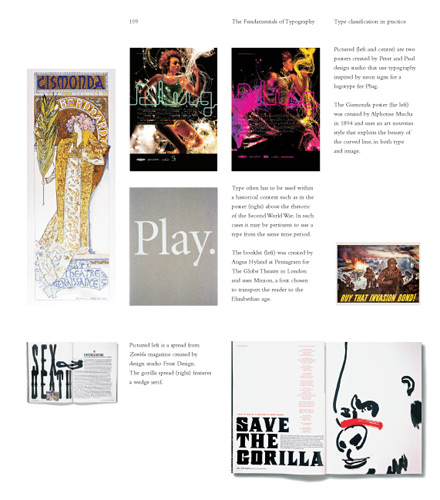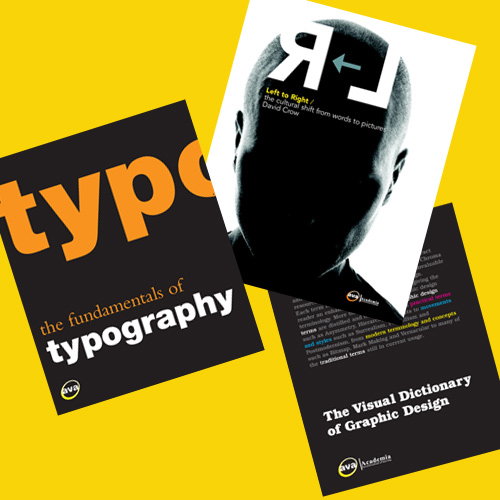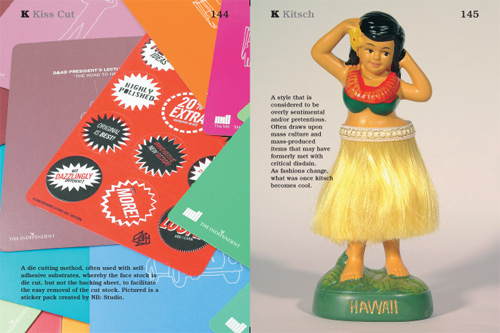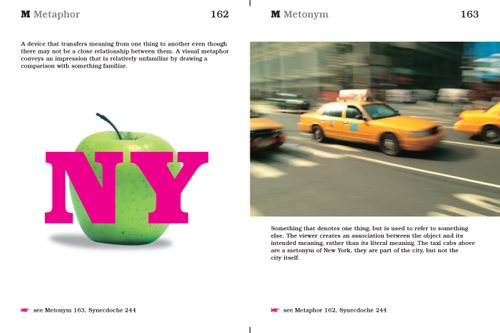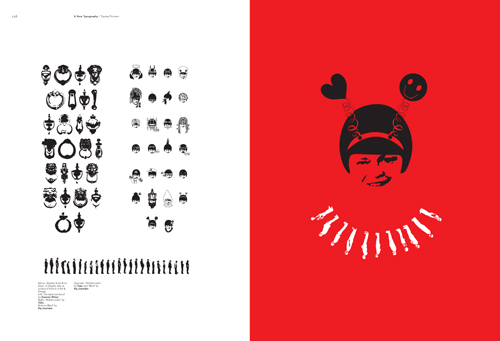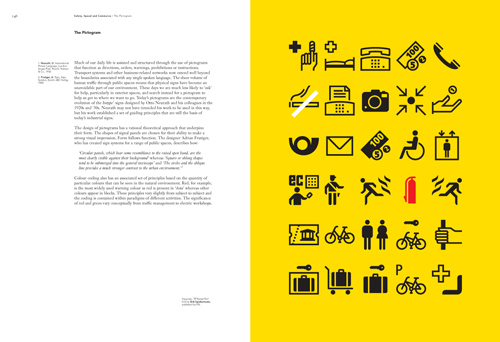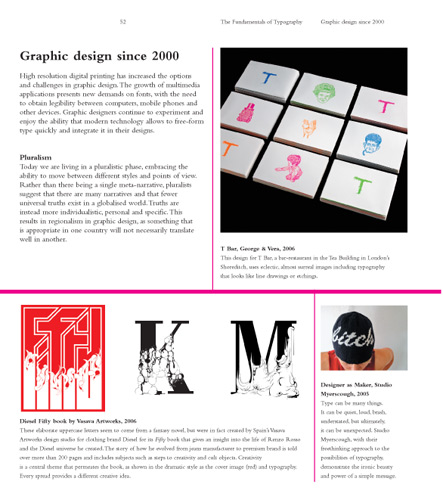3 interessante Bücher
>> The Visual Dictionary of Graphic Design
(Gavin Ambrose & Paul Harris)
Das Buch ist mit seinem Format (12 x 16 cm) und seinen 288 Seiten ein kompakter, handlicher Leitfaden mit vielen verschiedenen Begriffen, die regelmäßig im Bereich des Graphic Designs verwendet werden. Insgesamt enthält es 250 Begriffe - von A wie Abstrakt bis Z wie Zeitgeist. Das Buch erklärt praktische Begriffe, Bewegungen und Stile, moderne Begriffe und Konzepte, aber auch traditionelle Begriffe, die umgangssprachlich noch immer genutzt werden, erklärt diese und bringt sie in den richtigen Zusammenhang. Ein Index mit Synonymen und Querverbindungen am Ende des Buchs ist besonders hilfreich. Es ist kein langweiliges Nachschlagewerk, sondern ein Handbuch, das aufgrund seiner bunten und anschaulichen Gestaltung auch einfach zum Blättern einlädt.
Synopsis
"The Visual Dictionary of Graphic Design" is a straight talking guide to the many and varied terms used frequently within the realms of graphic design. From abstract to Zeitgeist, Bauhaus to Pluralism, via channels and rococo, this book will prove an invaluable resource to anyone studying or simply just interested in graphic design.
Each term is explained and contextualised, providing the reader with an enhanced understanding of the often mystified and confusing language used within art and design related disciplines. Each entry uses a different typeface (a history of which is contained in the back of the book) and dispels the myths surrounding some of these terms using varied illustration techniques, creating an eclectic, useful, and entertaining book. In essence this book takes the complex and makes it simple.
Author(s)
Gavin Ambrose is a practising graphic designer whose client base includes the arts sector, galleries, publishers and advertising agencies. He has written and designed several books on graphic design, branding and packaging.
Paul Harris studied at the London College of Communication and has gone on to become a freelance writer and editor. His work has appeared extensively in magazines and journals on both sides of the Atlantic, including style bible Dazed & Confused.
>> Left to Right: The Cultural Shift from Words to Pictures
(David Crow)
Left to Right zeigt Beispiele unserer zunehmend visuellen Kultur. Ein aktueller Trend ist, dass auch die geschriebene Sprache immer mehr visuell angetrieben wird. Designer, Autoren und Schulen reagieren darauf und suchen eine neue Art, wie sie ihre Zielgruppe ansprechen, die einen neuen Lesestil hat. Die Entwicklung der Sprache ging Hand in Hand mit der technologischen Entwicklung. Dies wird in den recht luftig gestalteten Kapiteln „The Television Age“, „Language without boundaries“, „A New Typography“, „Safety, Speed and Commerce“ und „Converging Technologies“ zum Thema gemacht.
Synopsis
This book is a journey through our increasingly visual culture. A journey where we consider how technological change has influenced the way we think, the way we see and the way we communicate. We will look at the way that the development of language has gone hand in hand with the development of technology.
The rise of alphabetic literacy – reading and writing – has reconfigured the way we think and has been a contributing factor to changes in history, religion, gender relations and culture. With the introduction of television, the potency of images was greatly increased. As a result, alphabetic information has faced a strong challenge. The rapid development of screen-based media over the latter half of the 20th century has seen the introduction of an increasingly portable range of digital technologies and with this has come an increasingly image-based use of language. The increasing convergence of the television with the home computer, the video game, the world wide web, the mobile telephone and the digital camera has run in parallel with a reduction in the number of people reading text. Artists, designers, authors, publishers, schools and universities have all had to reassess their approach to language and find new ways of talking to a generation who have a new way of reading.
The trend of mass media communication is toward the visual and we find ourselves in an age where even our written language is becoming more and more visually driven.
Author(s)
David Crow studied Communication Media at Manchester Metropolitan University and subsequently worked as a designer in London at the design group Assorted Images and as an Art Director for Island Records before running his own freelance consultancy. As a freelance designer he worked for a range of clients in the cultural sector including Rolling Stones Records, Virgin Records, Phonogram and The Royal Shakespeare Company. He then moved into academic life where he ran the Graphic Arts Department at Liverpool John Moores University for eight years until he returned to Manchester Metropolitan University, where he is currently Head of the School of Design.
>> The Fundamentals of Typography
(Gavin Ambrose & Paul Harris)
Dieses Buch gibt eine Einführung in die Geschichte der Typografie und die typografischen Details. Zudem bietet es einen Einblick in die Generierung von Fonts für Print und Web. Wie man es von Ava books gewohnt ist, enthält das Buch ausführliche Erklärungen, Bebilderungen, Fallstudien und Beispiele führender Designs der ganzen Welt. Für Studierende und Typo-Interessierte ist das Buch ein praktisches Standard-Werk, das im Gegensatz zu „The Visual Dictionary“ aufgrund der Seitengestaltung und der Fülle an Informationen weniger zum Blättern animiert, sondern vielmehr zum gezielten Nachschlagen geeignet ist.
Synopsis
The Fundamentals of Typography offers an incisive insight into the realisation of typographic practice. Offering a comprehensive introduction to the history of typography, typographic detailing in practice and font generation for print & web.
Supporting these key areas, this volume also demonstrates the power and variety of typography, with a chapter on identity and typographic creativity respectively. Typography's inherent cognitive qualities are widely acknowledged and utilised in the development of corporate identity and design styles. Typographic creativity demonstrates the many possibilities that type offers - from basic manipulation to artistic expression.
A sound understanding of type history and classification facilitates controlled, intelligent and thoughtful type usage, across a range of media. The Fundamentals of Typography builds upon these shared
principles and will become in invaluable reference to creatives and designers alike.
Fundamental principles are presented through detailed explanations, expanded illustrations, case studies, and exemplars from leading design studios around the world.
Author(s)
Gavin Ambrose is a practising graphic designer whose client base includes the arts sector, galleries, publishers and advertising agencies. He has written and designed several books on graphic design, branding and packaging.
Paul Harris studied at the London College of Communication and has gone on to become a freelance writer and editor. His work has appeared extensively in magazines and journals on both sides of the Atlantic, including style bible Dazed & Confused.
www.avabooks.ch
